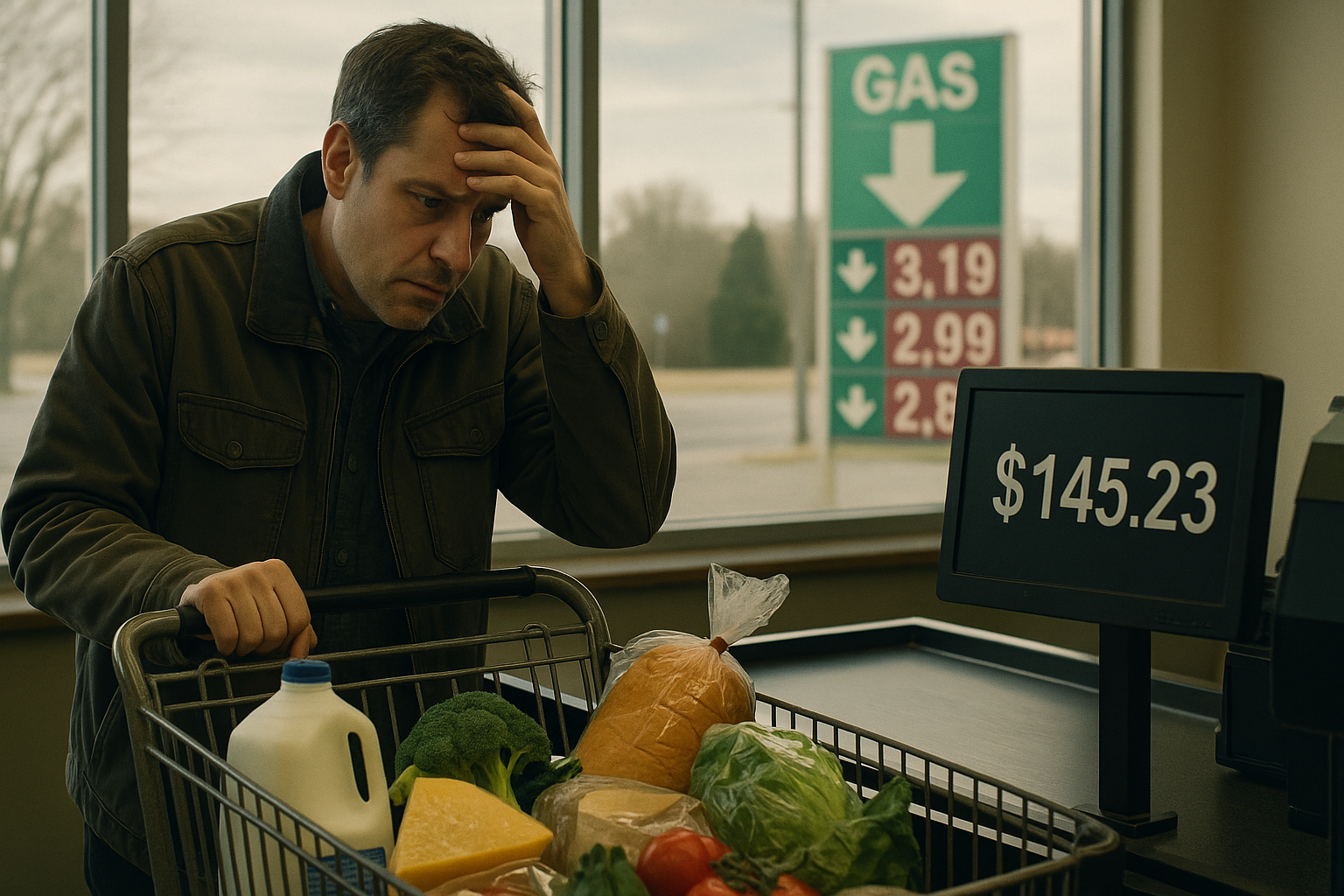Canada's inflation rate has dropped to 1.7% in July, dipping below that magical 2% target that keeps central bankers sleeping soundly at night. It's a number that looks pretty darn good on paper – better than economists expected, actually – and certainly gives the Bank of Canada something to crow about.
But hold your applause.
Because if you've pushed a shopping cart down a grocery aisle lately, you know there's more to this story than the headline number suggests.
The inflation slowdown comes primarily from falling gas prices, which, let's be honest, have been behaving like a yo-yo on espresso for the past few years. Meanwhile, food prices? They're still climbing faster than my neighbor's hydro bill in winter.
I've been covering economic trends since before the pandemic, and what we're witnessing is a classic case of what economists call compositional shift – a fancy way of saying "robbing Peter to pay Paul." Transportation costs down, grocery bills up. The statistical average looks rosy while actual household budgets remain squeezed.
Here's the thing about inflation that central bankers sometimes forget (or conveniently ignore): people experience it personally, not statistically. You fill your grocery cart every week but might only fill your gas tank every couple of weeks. Which price change do you notice more? Which one stings?
"The numbers look encouraging," one Toronto economist told me yesterday, "but tell that to someone staring at a $7 block of cheese."
The Bank of Canada, to its credit, has been ahead of the curve in this economic cycle. Governor Tiff Macklem cut rates before the Fed even worked up the courage to think about it. This report gives him some vindication – a economic gold star for his policy binder.
But the persistent strength in food prices suggests that their work isn't finished. It's just... complicated now.
(And we haven't even mentioned housing costs – that's a whole different Canadian nightmare.)
The market reaction was predictable as sunrise: bond yields dipped, traders started betting on more aggressive rate cuts, and the loonie softened against the greenback. All the typical financial choreography that follows these reports.
What's fascinating – and by fascinating, I mean deeply ironic – is watching central banks that spent two years frantically hiking rates to fight inflation now potentially pivoting to combat disinflation risks. It's like watching someone frantically steer away from one ditch only to veer toward another.
Look, Canada's economic performance does stand out internationally. While the U.S. still wrestles with above-target inflation and the U.K. endures its painful adjustment, Canada seems to be threading the needle between inflation control and economic growth. That's what the textbooks call a "soft landing," though I've yet to meet a Canadian who describes their current economic situation as "soft" anything.
The next Bank of Canada meeting looms large. Another rate cut seems inevitable – but how big and how soon? My money's on caution. Central bankers, once burned by inflation's flame, tend to move with the urgency of molasses in January.
In the meantime, Canadians continue their own inflation dance – celebrating cheaper fill-ups while wincing at the checkout counter. Because at the end of the day, that 1.7% inflation figure might make headlines, but it's the price of eggs, milk, and bread that makes or breaks household budgets.
And on that front, the story is far from over.



